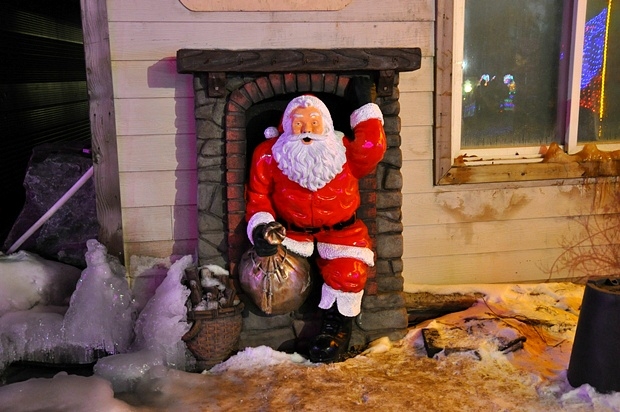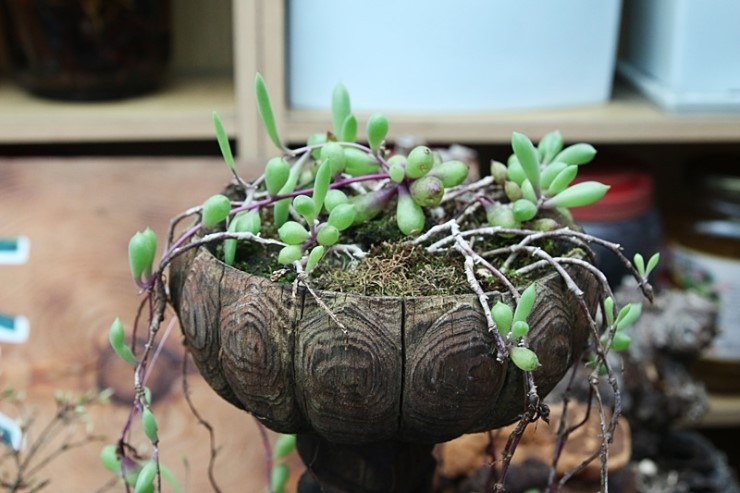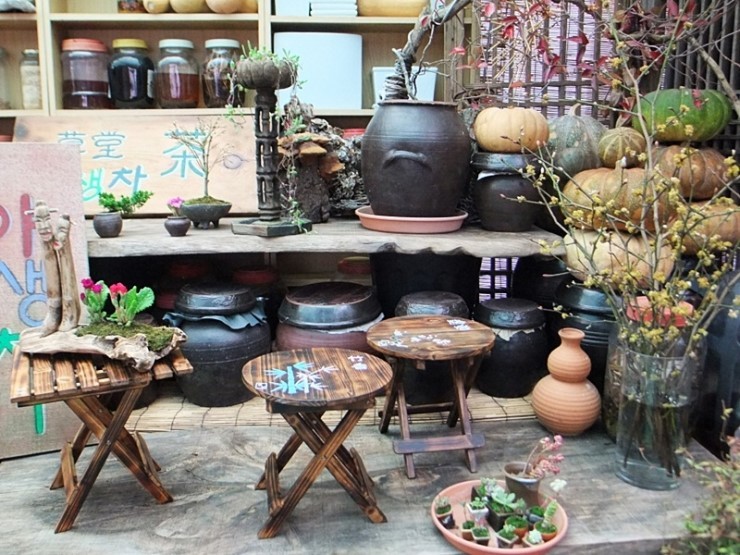A scent of yellow at Sansuyu Village in Yangpyeong, and romantic Dasangil in Namyangju
Our hearts flutter in April when flowers bloom. Don’t just sit there with all the spring flowers blooming all over the place. How about going on a trip to enjoy the spring flowers, walking or riding a bike along a flowered path in a warm spring breeze? The scent of spring you experience on your feet doubles the pleasure. Enjoy the fresh spring in Gyeonggi Province where splendid flowers are in full bloom.

◇ In Nae-ri and Jueup-ri in Gaegun-myeon of Yangpyeong County, one can find Korea’s oldest Japanese cornelian cherry (sansuyu) tree along with a few hundred-year-old cornelian cherry tree colonies, all showing off their splendor. ⓒ Gyeonggi G-News
■ A trip to Yangpyeong County, lost in fragrance and captivated by taste
Sansuyu Village → 8.6km (25 minutes by car) → Hanuman (Yangpyeong Local Corporation) → 9.1km (10 minutes by car) → Yangpyeong Insect Museum → 2.1km (3 minutes by car) → Wild Flower Arboretum
An invitation to experience the scent of yellow: Sansuyu Village
This is the season for flower festivals. Every April, when yellow cornelian cherry flowers are at their peak, a festival takes place in Yangpyeong County as well. The 11th Yangpyeong Sansuyu Flower & Korean Beef Festival will be held from April 4 to 6 this year. The main venues of the festival are Nae-ri and Jueup-ri in Gaegun-myeon, where over 7,000 cornelian cherry flower tree colonies can be found. There one can see Korea’s oldest Japanese cornelian cherry tree along with a few hundred-year-old cornelian cherry tree colonies, all showing off their splendor.
At the Leports Park, various events and performances will be staged, including a writing contest, singing contest, youth cultural festival, B-boy performance, and fireworks. A shuttle bus will be provided at one-hour intervals from the Leports Park to Sansuyu Village during the festival period. Experiential programs will be provided at Sansuyu Village, such as hitting cornelian cherry rice cake with a mallet and chopping wood. Visitors can also sample various foods such as sorghum rice cake, mung-bean pancakes, acorn jelly salad and cornelian cherry rice wine. If you want to enjoy the fragrance of flowers that have been slowly bathed in sunlight and wind, it would probably be better to visit the village outside of the festival period. Sansuyu Village abounds with the happiness of spring, fragrant with the scent of flowers with every step you take.
Contact: 031-770-3341~4 (Festival Promotion Committee), 031-773-9858, 031-771-5010 (Sansuyu Zone Office)
Website: http://www.ypfestival.com
Venue: 84, Jajingae 1-gil, Gaegun-myeon, Yangpyeong County, Gyeonggi Province (Gaegun Leports Park)
Nae-ri: 1, Sansuyu 1-gil, Gaegun-myeon, Yangpyeong County, Gyeonggi Province
Jueup-ri: 2, Sansuyukkonmaeul-gil 125beon-gil, Gaegun-myeon, Yangpyeong County, Gyeonggi Province
[Food] Fresh Yangpyeong Korean beef: Hanuman
The reputation of Yangpyeong beef has been well established since the Joseon Dynasty. The region was the first in Korea to begin raising steers, sustaining its reputation. Yangpyeong beef has a significantly higher content of oleic acid and unsaturated fatty acid, and it has achieved recognition as premium beef with its pure and tender quality and appetizing aroma. Visitors can buy and taste premium Yangpyeong Korean beef at the Well-being market of the Yangpyeong Local Corporation. Hanuman, a self-service restaurant next to the store, is popular among picnickers as they can freely roast and eat their beef with a table-setting fee.
Menu: Sirloin KRW 11,000-12,000/100g, special parts KRW 13,000-15,000/100g, table-setting KRW 3,000/person
Contact: 031-770-4040
Address: 2401, Gyeonggang-ro, Yangpyeong-eup, Yangpyeong County, Gyeonggi Province (Yangpyeong Local Corporation)
[Nearby Attraction1] Appreciating the value of nature: Insect Museum
Insects also become more active in spring. The Insect Museum is one place that visitors are recommended to drop by at least once on an outing with their children. The Yangpyeong Insect Museum is not that big, but it is more than sufficient to fascinate visitors with mysterious insects. It is a place that provides an opportunity for visitors to cast away prejudice and get closer to insects through the viewing of over 1,500 insect specimens, making badges, and interaction with wriggling caterpillars.
Contact: 031-775-8022
Address: 1496, Gyeonggang-ro, Okcheon-myeon, Yangpyeong County, Gyeonggi Province
Operating hours: Summer (March-October) 09:30-18:00, winter (November-February) 09:30-17:00
Admission fee: Adults KRW 3,000, children/teenagers KRW 2,000
Parking: Free
Closed: Monday, Jan. 1, Lunar New Year’s Day, Chuseok
[Nearby Attraction2] Fascinated by the strong scent of flowers: Wild Flower Arboretum
The Arboretum is another must-see attraction for a spring flower trip. The Wild Flower Arboretum is especially popular as it has a trail along the banks of the Han River. Charming little flowers in the Palm Garden right behind the entrance attract visitors first. The arboretum features over 30 themes for families to experience while enjoying spring, such as the Wild Flower Garden, Natural Ecology Museum, Dinosaur-egg Rock Garden, Year-round Sled Park, and Floating Island as well as the Maze Garden that is especially popular among children.
Contact: 031-772-1800, http://www.nemunimo.co.kr
Address: 16, Sumogwon-gil, Yangpyeong-eup, Yangpyeong County, Gyeonggi Province (Wild Flower Arboretum)
Operating hours: Summer (April-November) 09:30-18:00, winter (November-March) 09:30-17:00 / Open year-round
Admission fee: Adults KRW 7,000, middle/high-school students KRW 5,000, children KRW 4,000
Parking: Free

◇ With a quiet woodland path, a low mountain path and a village path along the river, Dasangil Course 2 in Namyangju City is superb for taking a walk while enjoying the atmosphere of spring.ⓒ Gyeonggi G-News
■ A surge in the scent of flower: A trip to Namyangju
Dasangil Course 2 (Neungnae Samgeori) → 320m (5 minutes on foot) → Neungnae Station (shut-down station) → 2.1km (5 minutes by car) → Byeolnan Mushroom → 4.4km (8 minutes by car) → Namyangju Museum of History
A riverside path filled with romance: Dasangil Course 2
Walking trails have been gaining popularity in Korea. Currently, there are 13 paths in total in Namyangju City, including Hangang Narugil and Saesori Myeongdanggil. Among them, Dasangil Course 2 is ideal for families and lovers to enjoy while trekking amidst the spring flowers. Running from Neungnae Samgeori to the Historic Site of Dasan and past the Majae Village Lotus Flower Complex in Namyangju with a quiet woodland path, a low mountain path and a village path along the river, Dasangil Course 2 is superb for taking a walk while enjoying the atmosphere of spring. A boat floating gently on the water peps up the mood, and sunlight sparkling on the waves adds more pleasure to the walk. The scent of flowers carried on the gently blowing breeze from the river enhances the feeling of the spring season. Visitors can reach Dasan Earth Park if they go around and down through the village. The park is quite broad along the riverside, and it provides an ecological landscape and a place for leisure for visitors with facilities such as a grass plaza, streamlet, observation platform, trail, ecological wetland, and water garden. Of particular note, the Historic Site of Dasan, which features Dasan Jeong Yak-yong’s accomplishments and remains, as well as the Museum of Silhak (Korean practical science) are highly recommended. It may also be great to pack your lunch and stroll leisurely along Dasangil Course 2 with its outstanding scenery and abundant attractions.
Dasangil Course 2: Neungnae Samgeori (starting point) → Lotus Flower Complex → Dasan Earth Park/Silhak Ecology Hill → The Museum of Silhak / Historic Site of Dasan → Neungnae 1-ri Community Center → Neungnae Samgeori (regression)
Distance: 3.4km / Time: 1 hr. 20 min.
Contact: 031-590-4243 (Culture and Tourism)
Course 2 starting point: 11, Dasan-ro 526beon-gil, Joan-myeon, Namyangju City (nearby)
Historic Site of Dasan: 11, Dasan-ro 747beon-gil, Joan-myeon, Namyangju City
[Nearby Attraction1] Cherishing old memories: Neungnae Station
Neungnae Station has been closed since 2008, but has become even more famous after being shut down. The waiting room that enshrines countless stories and memories has been transformed into the Home Photo Studio, an exhibition hall decorated with faded photographs and wooden chairs that evoke nostalgia for the past. Dasangil (Course 1) and a bike path have been established along the old railroad, as well as a train cafe, snack bar and a bike rental shop. Rent a bike and speed away on it as you feel the scent of flowers.
Address: 384, Dasan-ro, Joan-myeon, Namyangju-si, Gyeonggi Province
Parking charge: Free
Bike rental: KRW 3,000 (1 person) per hour, KRW 5,000 (2 persons) per hour / One day on a weekday KRW 10,000-15,000
[Food] A feast of mushrooms: Byeolnan Mushroom
Mushrooms are well known for their health benefits. They are rich in various nutrients and have various properties including cancer prevention and weight loss. You can eat as many as you want at Byeolnan Mushroom. The mushroom yukgaejang (spicy soup) contains six types of mushrooms including oyster, pine, shiitake and enoki mushrooms, and the Sarcodon aspratus and straw mushroom soup is boiled with eight types of mushrooms, with Sarcodon aspratus and straw mushrooms added to the six types previously mentioned. The first taste of bitterness stimulates the appetite, and the delicate flavor of mushrooms fills the mouth. The light and tasty soup is beyond comparison.
Menu: Mushroom yukgaejang KRW 9,000, clean mushroom soup KRW 9,000, Sarcodon aspratus and straw mushroom soup KRW 13,000
Contact: 031-592-6654
Address: 9, Dasan-ro 362beon-gil, Joan-myeon, Namyangju City, Gyeonggi Province
Closed: Mondays
[Nearby Attraction2] Peering into the lives of ancestors: Namyangju Museum of History
The Namyangju Museum of History enables visitors to peer into the history and lifestyle of Namyangju including prehistoric remains and royal culture. Unlike other museums that merely provide visual enjoyments, this museum offers a space where visitors can touch the actual materials and models. The epigraph gallery on the 2nd floor displays the transformation process of scripts from different periods as well as epigraphs carved in various places. The special exhibit, which is scheduled to run until April 30, displays various types of bowls such as jars, caldrons and steamers to provide a taste of ancestral lives and wisdom.
Contact: 031-576-0558
Address: 121, Paldang-ro, Wabu-eup, Namyangju City, Gyeonggi Province
Website: http://www.nyjmuseum.go.kr
Operating hours: 09:00~18:00
Admission fee: Adults KRW 1,000, teenagers KRW 800, children KRW 600
Parking: Free
Closed: Mondays, January. 1
ⓒGyeonggi G-News | Lee Jun-gyun eyekle@hanmail.net
http://gnews.gg.go.kr/news/news_detail.asp?number=201403280912367055C049&s_code=C049





















































































